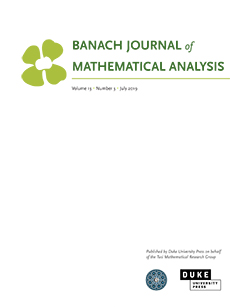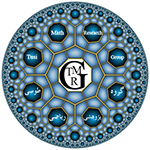Abstract
Professor Themistocles M. Rassias' special predilection and contribution to the study of Mobius transformations is well known. Mobius transformations of the open unit disc of the complex plane and, more generally, of the open unit ball of any real inner product space, give rise to Mobius addition in the ball. The latter, in turn, gives rise to Mobius gyrovector spaces that enable the Poincare ball model of hyperbolic geometry to be approached by gyrovector spaces, in full analogy with the common vector space approach to the standard model of Euclidean geometry. The purpose of this paper, dedicated to Professor Themistocles M. Rassias, is to employ the Mobius gyrovector spaces for the introduction of the hyperbolic square in the Poincare ball model of hyperbolic geometry. We will find that the hyperbolic square is richer in structure than its Euclidean counterpart.
Citation
Abraham A. Ungar. "The hyperbolic square and Mobius transformations." Banach J. Math. Anal. 1 (1) 101 - 116, 2007. https://doi.org/10.15352/bjma/1240321560
Information





